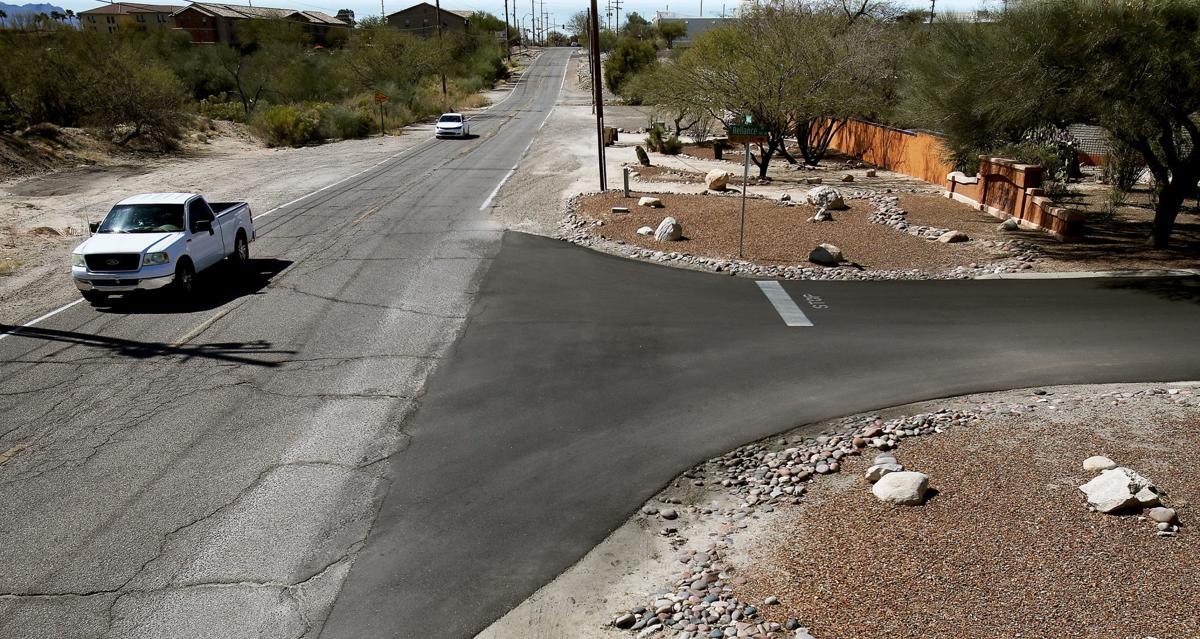As regular readers know, getting all roads in the county up to fair condition is estimated to be a $1 billion problem.
It’s a more modest $300 million problem for roads in the unincorporated parts of Pima County.
Given those daunting figures, it’s no surprise that county officials are interested in alternative technologies that could significantly cut repair costs.
Enter Tucson Asphalt Contractors, a local firm that has developed what it calls Green Asphalt, which can be applied on roads in poor condition and — the company says — equals or exceeds the quality of a full mill and fill. Because there is no need to do the mill part of that process, the company says it is also a much cheaper and ecologically friendly alternative. It comes with a four-year warranty to boot.
“If I had a product that’s twice as good, and costs half as much, would you buy it?” asked company owner and Green Asphalt inventor Paul Polito, who — like any good businessman — believes in his product.
But like any good customer, the county wants to be sure any alternatives to standard paving are up to snuff.
County Administrator Chuck Huckelberry and other county officials are contemplating a pilot project with Green Asphalt in which the product would initially be used in two District 1 subdivisions, with the possibility of additional sites if the first two, Sabino Town and Country Estates and Moondance Patio Homes, “appear successful.”
Residents of both neighborhoods lobbied heavily to be included in the list of repair projects funded by the first year of the road property tax, but the proposed substitutions were shot down by the Board of Supervisors over the objections of the district’s supervisor, Ally Miller, and her District 5 colleague, Richard Elías. Miller did not respond to a request for comment on the proposal.
The full repair of the two subdivisions would have cost an estimated $340,000, but Tucson Asphalt says it can overlay the roads with its Green Asphalt for less than $200,000. That’s a more than 40 percent savings.
The county Transportation Advisory Committee is being asked to weigh in, and the Board of Supervisors would have to approve any final deal with Tucson Asphalt.
“Using the ‘Green Asphalt overlay’ as a pilot prototype may lead to further cost savings if it can be demonstrated that this product achieves acceptable performance over time and could be applied to other subdivisions,” Huckelberry wrote in a recent memo.
However, Deputy County Administrator Carmine DeBonis told the Road Runner that, “There is not a great deal of demonstrated longevity or performance of the materials, at least in unincorporated Pima County.”
Determining how it stands up to standard alternatives will likely be a years-long process, according to DeBonis.
Additionally, it is standard county practice to test materials being used for county-funded projects. But, because the material is proprietary with a pending patent application, Tucson Asphalt does not allow sampling without the “express written permission” of the company, according to a proposal submitted to the county.
Polito says his company has independent labs analyze the product for quality assurance.
DeBonis said the county “would need to work with Tucson Asphalt to come up with an acceptable means to verifying what those material characteristics are.”
In an early January memo to Huckelberry, DeBonis recommended that the transportation department develop a program for evaluating “the viability of alternate paving materials and methods,” which he said could be up and running by the summer.
While Tucson Asphalt hasn’t done any major Green Asphalt projects for the county, it has done paving projects with a number of local homeowners associations. The Road Runner spoke with one HOA representative to see how things went.
Dave Starr, who deals with transportation issues for the Foothills Buena Vista Estates Neighborhood, said they’ve had a positive experience with Green Asphalt.
The company did an initial application in 2015 but, after discovering that the mix had been off, redid the work “free of charge” in May 2017, according to Starr. Since then, it’s gone “very, very well,” and the HOA intends to have more work done by the company, Starr said.
What about the potential guinea pigs?
Jean Johnson, a Moondance resident who has been an active advocate for her neighborhood’s streets, had a something-is-better-than-nothing outlook.
“Almost anything they’d like to try would be better than infinite deteriorating, which is what we’re looking at right now,” she told the Road Runner.
“I would be happy to see almost anything done to improve the streets, and I think I can speak on behalf of almost anyone who owns their home here.”
“It can’t look any worse than our roads now ” said Sabino Town and Country resident Vicki Mersiowsky.





